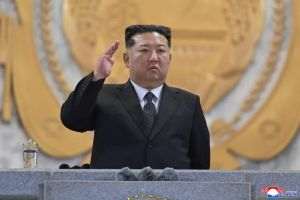Reporter: How adequate do you think the current pension system architecture is for our country's current and future needs?
Ştefan Daniel Armeanu: The demographic evolution of recent years, manifested at the global level by the negative evolution of the birth rate at the same time as a positive evolution of life expectancy, has determined the increase of the gap between generations and the increase of pressure on the public pension system. In the case of Romania, we must also add the large number of people who emigrated after joining the EU, a fact that accentuated the gaps in the population structure (4 million people aged 20-64).
16 years ago, the reform of the public pension system (Pillar I) began, which, as the studies carried out by the World Bank showed, could no longer support a state pension system based exclusively on redistribution and inter-generational solidarity, a fact for which recommended Romania to adopt the private pension system (Pillar II+Pillar III). Thus, the private pension system complements the public pension system and can determine in the long term the mitigation of demographic gaps and the maintenance of a decent standard of living after retirement.
From a microeconomic perspective, the private pension system presents the following advantages:
✓ Gain from capitalization, the private pension consists of the regular long-term investment of transferred contributions;
✓ High profitability, the performance of private pension funds registering a substantial increase, the annualized return achieved from the beginning of the system to date being 8.68%, higher than the inflation rate of 4.50% recorded during the period May 2008-June 2024. Also, the return obtained for the last year1 was 15.57%, higher than the inflation rate for the last year of 4.94%;
✓ The diversification of pension fund assets contributes to the dispersion and reduction of risks;
✓ Professional management of funds through professional expertise and available resources in implementing the best investment decisions;
✓ The tax benefits offered through the deductibility of contributions from the taxable base, only investment gains being taxable;
✓ It represents a source of supplementing the pension from the public system and personal savings, which determines the maintenance or increase of the standard of living after retirement;
✓ Net contributions transferred to Pillar II are guaranteed and trustees must ensure that they have sufficient assets to meet their future obligations;
✓ Reduced administration costs, connected to obtaining performances above the inflation rate;
✓ Flexibility from the perspective of assumed risk, a pension fund can be chosen according to the assumed risk through the prospectus (low, medium, high);
✓ They protect the interests of the family, pension funds have an insurance function in that the personal assets of the participants can be inherited;
✓ Rigorous legislative framework with investment, valuation, reporting and governance rules to ensure efficient management of pension fund assets.
On the other hand, from a macroeconomic perspective, the private pension system generates real benefits through:
✓ Economic impact by ensuring capital flows as private pension funds invest in a wide range of assets, including stocks, bonds, investment funds, respectively which provide capital to companies and government to finance projects and create jobs, which can help stimulate economic growth and development. Economic growth is positively influenced by the evolution of pension funds' assets, the evolution of real GDP being correlated with the evolution of the net assets of private pension funds;
✓ Stabilizing role in the financing process at the government level, contributing to reducing the risk of state refinancing, by increasing the weight of private pension funds in the total domestic public debt, limiting the vulnerability of the domestic market to periods of volatility, when investors tend to liquidate or reduce exposures to emerging countries;
✓ Stabilizing role of the capital market by generating long-term capital flows consistent with the investment horizon and providing constant liquidity through the monthly investment of private pension fund assets;
✓ It ensures the implementation of corporate governance standards at the issuers in the portfolio, which leads to the promotion of transparency, efficient management, increases trust and can determine the long-term success of companies;
✓ Attracting and retaining employees in the case of voluntary pension funds, respectively employers can offer an attractive benefit for employees by adding an additional contribution to the employee's own contribution;
✓ Long-term government savings by reducing the burden on government pension systems.
Reporter: What do you think are the main aspects that need to be changed in the current architecture of the pension system and why?
Ştefan Daniel Armeanu: As I have shown before, the development of the private pension system is essential in the current conditions of development of the Romanian society.
If we consider the total value of the assets of private pension funds from the end of 2023, compared to the end of 2022, they had an increase of 31.35%, a fact that places Romanian pension funds in 7th place out of 71 analyzed states by the OECD in the Pension Market in focus study 20231. At the same time, according to the OECD evaluation report for the period 2012-2022, Romania ranked 11th according to the real average rate of return on pension fund assets, being above the average of the 29 of analyzed OECD countries.
At the end of June 2024, the assets of private pension funds were mainly invested in government securities issued by the state, in a percentage of 64.34%. Private pension funds also invested in shares 25.37%, in corporate bonds 4.26%, in collective investment bodies 2.75%, bank deposits 2.98% as well as in other instruments a percentage of 0.30% (ETC, municipal bonds, bonds issued by foreign non-governmental bodies, etc.).
Of the total assets of the private pension system, a percentage of 94% is invested in instruments issued in Romania, the private pension funds contributing to the long-term support of the financing needs of the state, which uses the sums attracted including for investments that in turn generate a sustainable economic growth. By investing in both the primary and secondary markets, private pension funds have become the main institutional investors in Romania, contributing to the sustainable development of the capital market.
At the European level, since the first years after the Second World War, occupational pensions were established, which represent the second pillar of pensions. An occupational pension fund, also called an employer-sponsored pension scheme, is a pension provided by an employer for an employee. There are currently over 125,000 occupational pension funds operating in the EU and holding total assets of euro2.6 trillion1 on behalf of over 70 million citizens.
Starting from 2020, the law on occupational pensions was adopted which lays the foundations of the IV pillar of pensions in Romania, intended to provide the possibility for employers to offer employees benefits in the form of contributions to the employer's pension scheme, but which at the same time allows the mobility of employees through the possibility of transferring the accumulated amounts if the employer changes.
In addition to the existing 2 pillars of private pensions, pillar IV brings a new perspective, that of the contributions transferred by the employer which establishes the conditions of the own pension scheme and which can present various distinct benefits:
✓ the pension scheme is established by each employer who wishes and has the financial capacity to provide his employees with such benefits;
✓ employees of one or more employers can participate in an occupational pension fund;
✓ the employer represents the participants in the occupational pension fund in the relationship with the administrator, negotiates and signs the administration contract with the administrator;
✓ the employer can establish differentiated amounts of own contribution for his employees based on criteria of seniority, position or salary rights;
✓ the possibility of setting up a pension scheme with a vesting clause that implies a method of employee loyalty.
Another important aspect to which we must focus our attention in the coming period is the drafting of the private pension payment law. Payments can currently be made as a result of the fulfillment of legal conditions through a single payment or through installment payments over a period of up to 5 years. The payment law requires the creation of the legal framework for the payment of the pension due to participants and beneficiaries after the completion of the accumulation period. Thus, rules are needed regarding the private pension payment system, the introduction of conduct requirements and prudential principles, the minimum requirements for the authorization and operation of the private pension provider, etc.
Reporter: Although there have been increases in recent years, the number of participants and contributions to voluntary private pension funds remain low. How do you think voluntary saving/investment can be stimulated through pension funds in our country? How does ASF get involved in this endeavor?
Ştefan Daniel Armeanu: Recently, against the background of the attractive performance of optional pension funds, with higher returns than bank deposits, the level of confidence of the population in the system has constantly increased, which has determined the considerable increase in the number of participants. Thus, at the end of June 2024, the number of participants in optional pension funds increased by 14.28% compared to the end of June 2023.
A very important role in raising awareness of the need for long-term saving is played by financial education. Financial education aims to improve knowledge about the usefulness of private pension products, so that people are able to make the best decisions about planning the financial resources needed for retirement.
ASF, through the specialized department, carries out various national programs addressed to the target audience according to the needs of the beneficiaries and their socio-professional characteristics, as well as projects aimed at the entrepreneurial environment. ASF has also developed the website https://edutime.ro/ which is a source of information for people who want to improve their financial knowledge, including those related to private pensions.
Another important factor in stimulating the development of voluntary private pension funds is represented by the level of tax deductibility of contributions to these funds, for which it is necessary to align the deductibility ceiling related to individual contributions to voluntary pension funds to the current salary level.
Reporter: Occupational pensions are very popular in Western Europe, but in our country, although there is legislation, there are no such funds. What initiatives exist to stimulate the creation of such funds in Romania, what do they consist of and what is their status?
Ştefan Daniel Armeanu: Considering the fact that the occupational pension scheme is established by each employer, the contributions being paid exclusively by him, an important factor for ensuring the success of the occupational pension system is that the payment of the contributions is attractive for the employer from the point of view fiscal. In this sense, ASF has started an analysis of the legislation in order to complete the legal provisions so as to ensure the proper functioning and development of the occupational pension system in Romania.
Reporter: Romania is in the process of joining the OECD. What criteria does our country have to meet regarding the pension system or what recommendations does the Organization make in this regard and how does Romania fit into these criteria/recommendations?
Ştefan Daniel Armeanu: In the field of insurance and private pensions, the Committee for Insurance and Private Pensions assesses Romania's alignment with all the basic legal instruments of the OECD in its field of competence, as well as Romania's policies and practices compared to the best OECD policies and practices, with reference to the corresponding fundamental principles. They refer to at least the following:
✓ Ensuring that funded and private pension schemes are well-designed and inclusive, with sound regulation and prudential supervision, meeting governance requirements, with appropriate investment rules so that they work in the interests of members, contributing to the provision of a retirement income appropriate within the general pension system in the context of addressing the many challenges it faces, such as population ageing, sustainability and digitalisation;
✓ Market liberalization: Relaxation of restrictions on cross-border trade, investment and the conditions for the establishment of companies in the field of insurance and pension services, in accordance with the OECD Liberalization Codes;
✓ Consumer protection: Ensuring an adequate level of demand-side access, protection and support through consumer protection and financial education policies to address asymmetries in market capacity and other consumer vulnerabilities.
For the most part, the private pension system meets the basic principles set out by the OECD, with the multi-pillar system able to ensure diversification of risks in terms of funding at the time of retirement. The private pension system is based on a solid governance framework, with clear authorization and operation rules for pension funds and their administrators, the existence of the mechanism for correlating the performance of the funds with the commissions collected by the administrators.
The OECD has identified as an area for improvement in order to fully align Romania in relation to the best policies and practices of the OECD, the adoption of legislation on the payment of pensions to define and structure the different options for allocating accumulated assets to finance retirement in order to ensure coherence with the contribution accumulation phase.
Reporter: At the end of last year, you obtained a new mandate as Vice President of ASF, Sector of the Private Pension System. What are your goals for this mandate?
Ştefan Daniel Armeanu: The main objective of the activity carried out by the Private Pension System Sector is to ensure the stability of the private pension market and to create the conditions for its efficient operation, with the aim of protecting the interests of participants in private pension funds and beneficiaries.
Taking into account the fact that retirement age is approaching for an increasing number of participants, but also the recommendation formulated by the OECD, one of the short-term objectives aims to finalize the primary legislative framework of the private pension system by regulating the system of payment of private pensions, respectively the law on the payment of private pensions.
Another objective is the development of optional private and occupational pension funds, which can be boosted by supplementing the tax legislation in order to update the deductibility ceiling applicable to individual contributions to optional pension funds, but also the introduction of provisions regarding the application of deductibility and contributions paid to the funds of occupational pensions.
Another important objective is digitization in the current context of accelerating technological innovation, a fact that determines the need for adaptation and permanent evolution to meet consumer needs. In this context, in addition to the benefits resulting from the efficiency of some processes, it also results in an increased exposure of the system to cyber risks, a fact for which the objective in this field aims both at the development of digital activities and services, but also at ensuring the stability and integrity of the system.
Reporter: Thank you!
















































